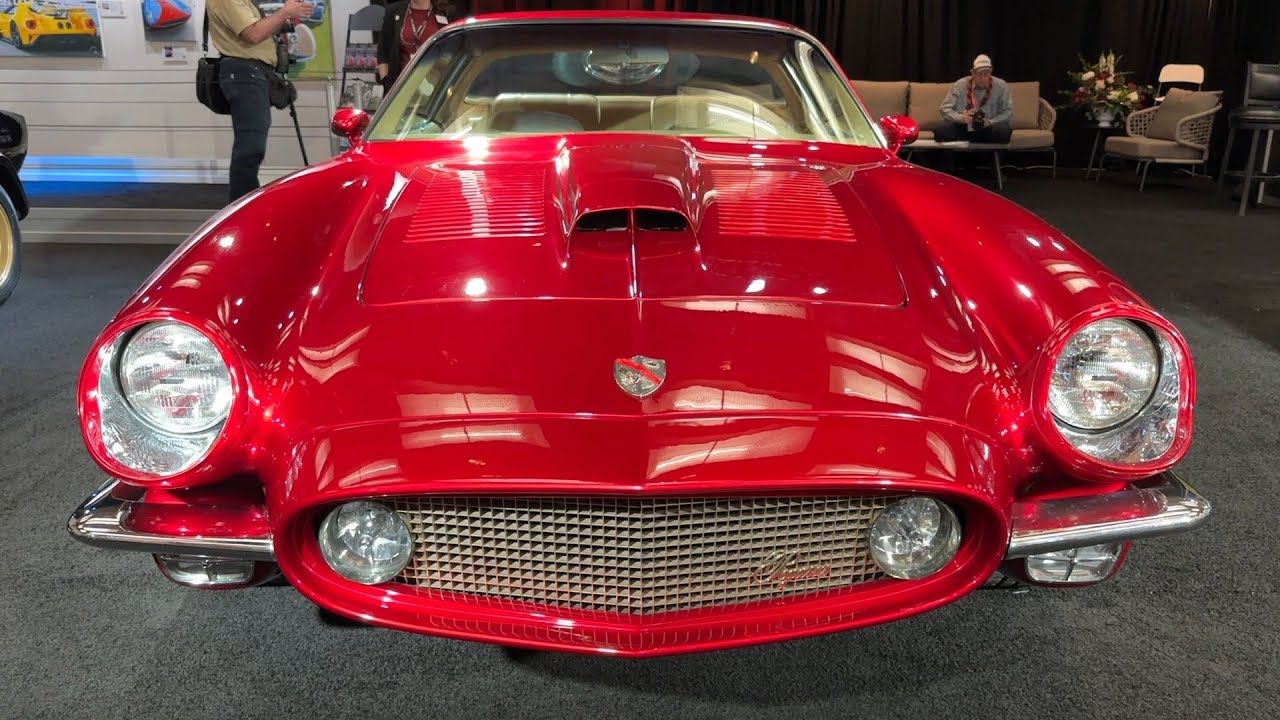
In 1968, Pontiac engineer Gordon Taylor embarked on a clandestine project to create a mid-engine supercar prototype known as the Stinger. This ambitious endeavor, hidden away in a Michigan barn for over five decades, featured a transplanted Ferrari V12 engine capable of producing 350 horsepower. The project, initiated under the leadership of John DeLorean at General Motors, was intended to compete with European exotics but was ultimately shelved due to internal corporate politics. The Stinger resurfaced in 2023 when Taylor’s family donated it to the National Cadillac and LaSalle Club Museum in Michigan.
The Genesis of the Stinger Project
Gordon Taylor, a lead engineer at Pontiac’s Advanced Studio in 1967, envisioned the Stinger as a lightweight, mid-engine coupe. Inspired by the Ferrari Daytona, Taylor utilized Pontiac’s fiberglass body molds from the earlier Banshee concept to bring his vision to life. John DeLorean, then Pontiac’s general manager, approved the secretive build in early 1968, allocating a budget of $25,000 to explore high-performance concepts without GM’s formal approval. The decision to incorporate a used Ferrari 365 California V12 engine from a scrapped 1966 model in California was driven by Pontiac’s lack of a suitable domestic V12 option.
The Stinger project was a bold move to push the boundaries of American automotive engineering. By sourcing a Ferrari engine, Taylor and DeLorean aimed to infuse European performance characteristics into an American chassis, challenging the status quo of domestic car manufacturing. This initiative reflected a broader trend in the automotive industry of the time, where American manufacturers were increasingly looking to European designs for inspiration.
Engineering the Hidden Powertrain
The integration of the Ferrari V12 into the Stinger required a custom tubular steel frame with a 98-inch wheelbase. This setup was paired with a five-speed manual transmission from a Pontiac Firebird, achieving a targeted 0-60 mph time of under 5 seconds. The 4.4-liter Ferrari engine was modified to 4.9 liters, producing 350 horsepower at 7,000 rpm and 310 lb-ft of torque. Pontiac mechanics tuned the dual Weber carburetors in a discreet Detroit facility, ensuring the engine met the project’s performance goals.
The Stinger’s suspension system was equally innovative, utilizing independent double-wishbone fronts from a Corvette and a de Dion rear axle. These components were tested on private Michigan roads during the summer of 1968 to validate the vehicle’s handling capabilities. This engineering feat demonstrated Pontiac’s commitment to creating a supercar that could rival its European counterparts, showcasing the potential for American innovation in high-performance automotive design.
Corporate Intrigue and Project Shutdown
General Motors discovered the unauthorized Stinger project in 1968 through a leaked memo from DeLorean’s office, prompting an internal audit. The audit deemed the Ferrari-sourced engine “too exotic” for Pontiac’s lineup, leading to the project’s abrupt shutdown. DeLorean expressed his frustration in a 1969 internal email, stating, “The Stinger could have been our Ferrari killer, but Detroit brass fears Italian blood in American veins,” as documented in GM archives.
Following the audit, the Stinger prototype was disassembled at Pontiac’s engineering center, with the Ferrari V12 stored separately in a crate labeled “experimental parts” to avoid further scrutiny. This decision marked the end of a promising project that could have significantly altered Pontiac’s trajectory in the high-performance market. The Stinger’s demise highlights the challenges faced by innovators within large corporations, where groundbreaking ideas often clash with conservative corporate cultures.
Rediscovery and Legacy
The Stinger’s components, including the intact V12 engine, were rediscovered in 2023 when Gordon Taylor’s son revealed their location in a family barn near Flint, Michigan, to museum curator Tim Sadler. The family donated the disassembled Stinger to the National Cadillac and LaSalle Club Museum on July 15, 2023, along with 1,200 pages of Taylor’s handwritten notes and blueprints. These documents provide invaluable insights into the project’s development and the innovative spirit that drove it.
The Stinger’s rediscovery has reignited interest in Pontiac’s legacy and its influence on later designs, such as the 1970 Firebird Trans Am’s aerodynamic features. Current restoration plans estimate a $500,000 investment to reassemble the Stinger as a running exhibit by 2025. This effort underscores the enduring impact of Taylor’s vision and the potential for forgotten projects to inspire future generations of automotive enthusiasts and engineers.
More from MorningOverview